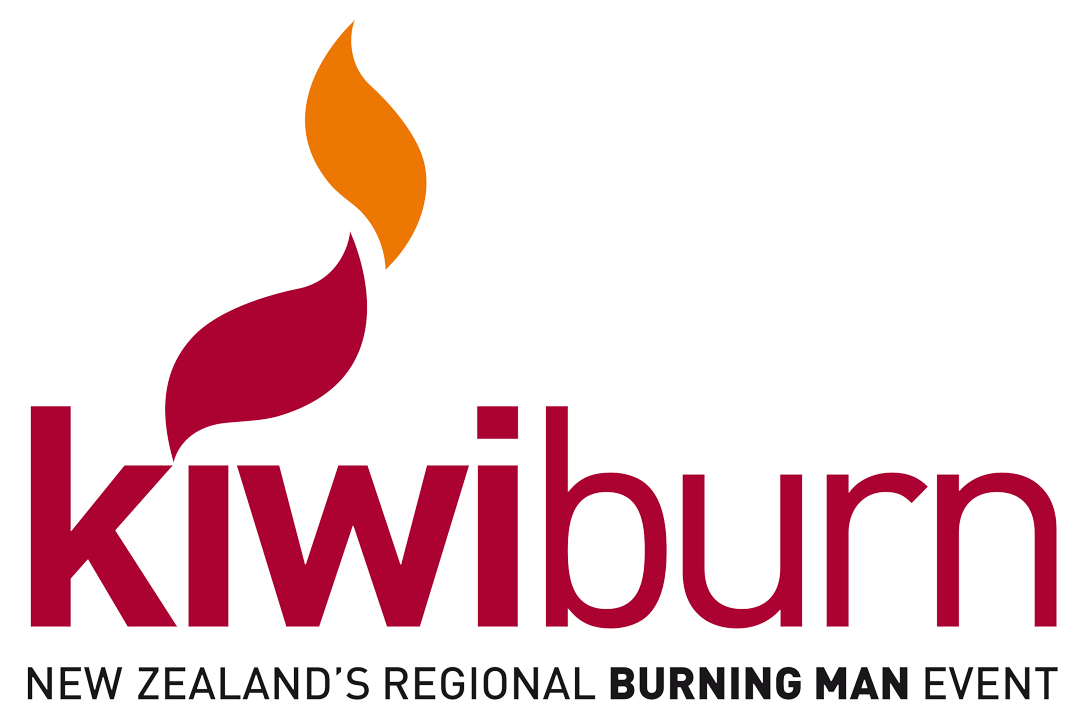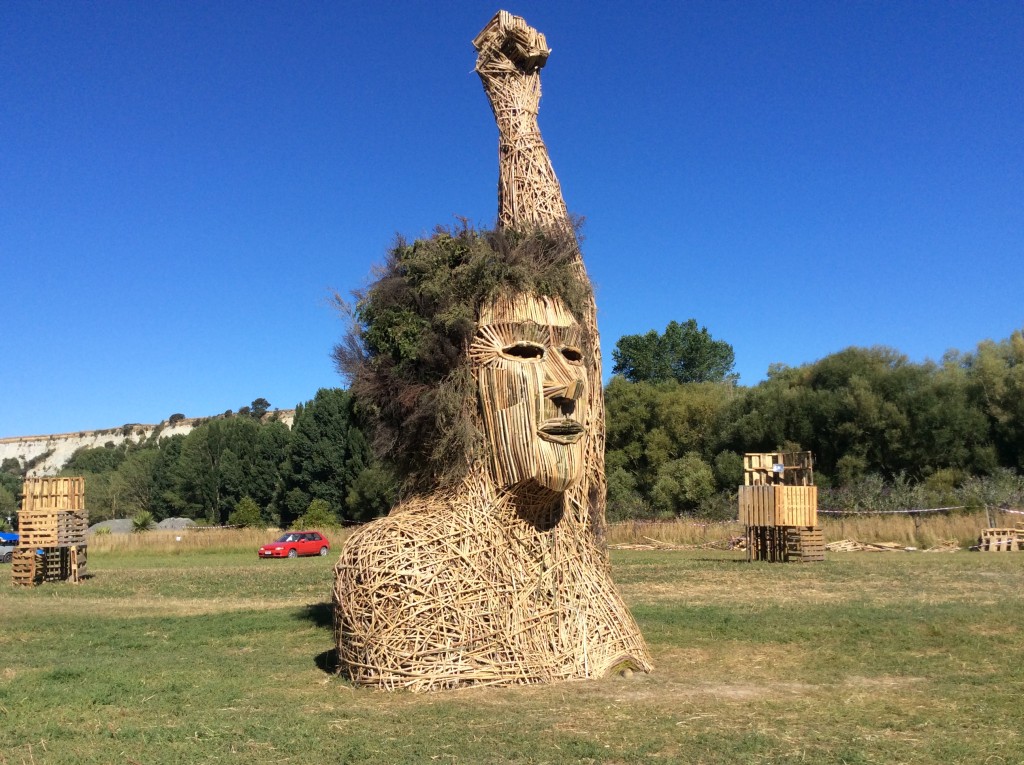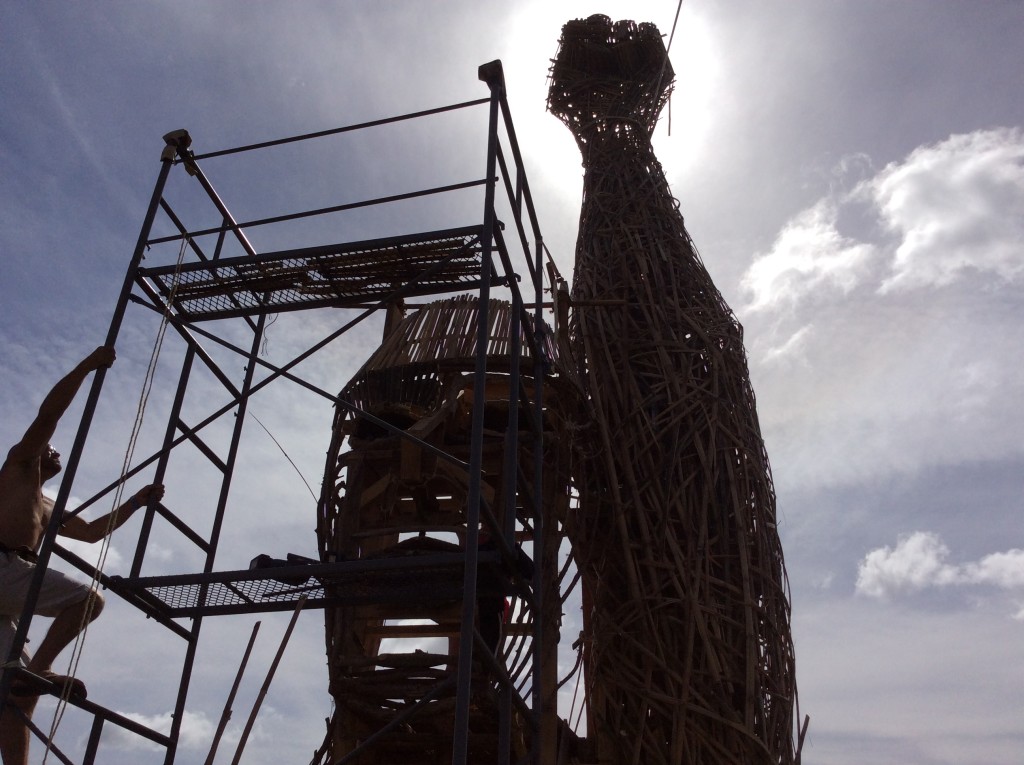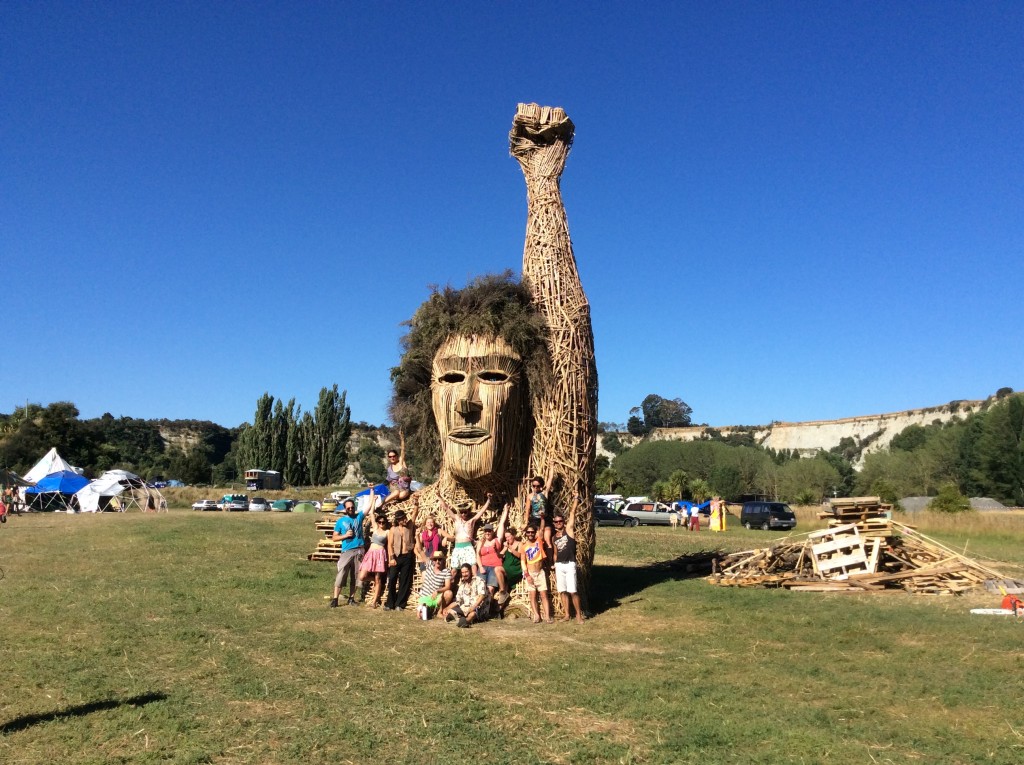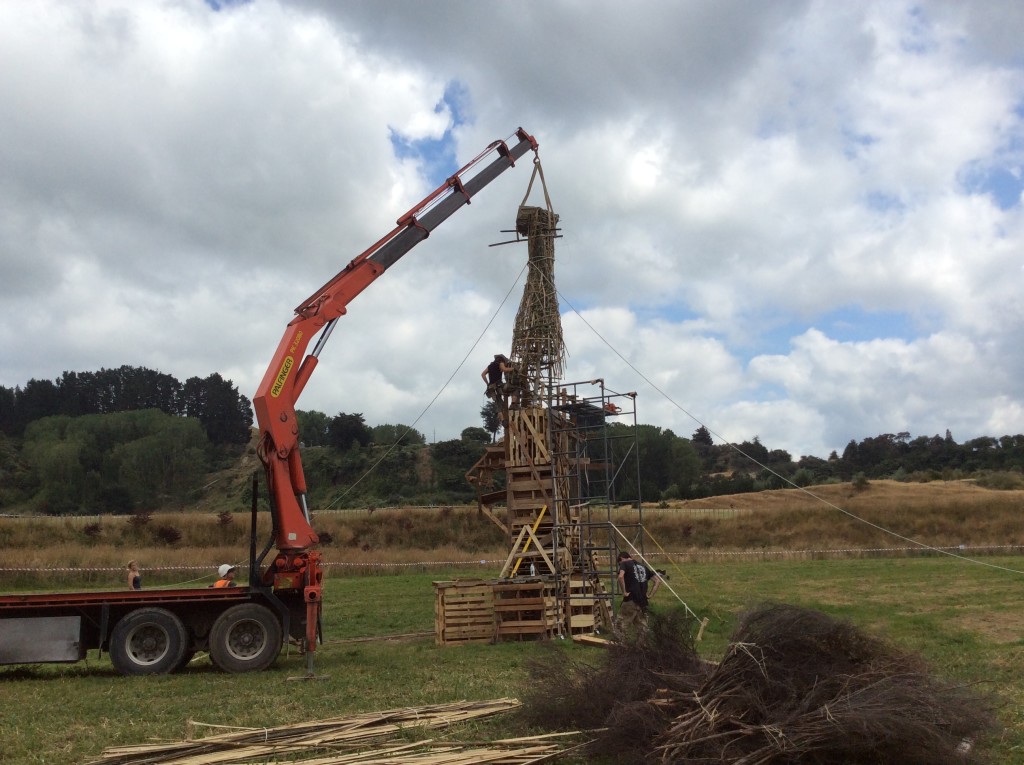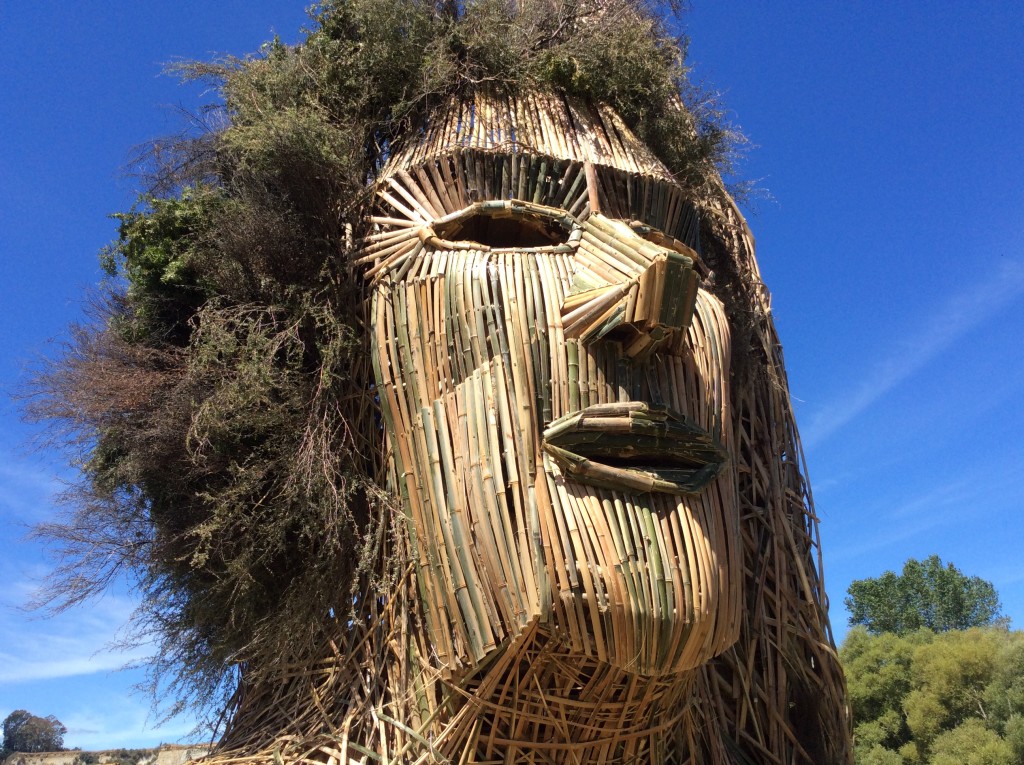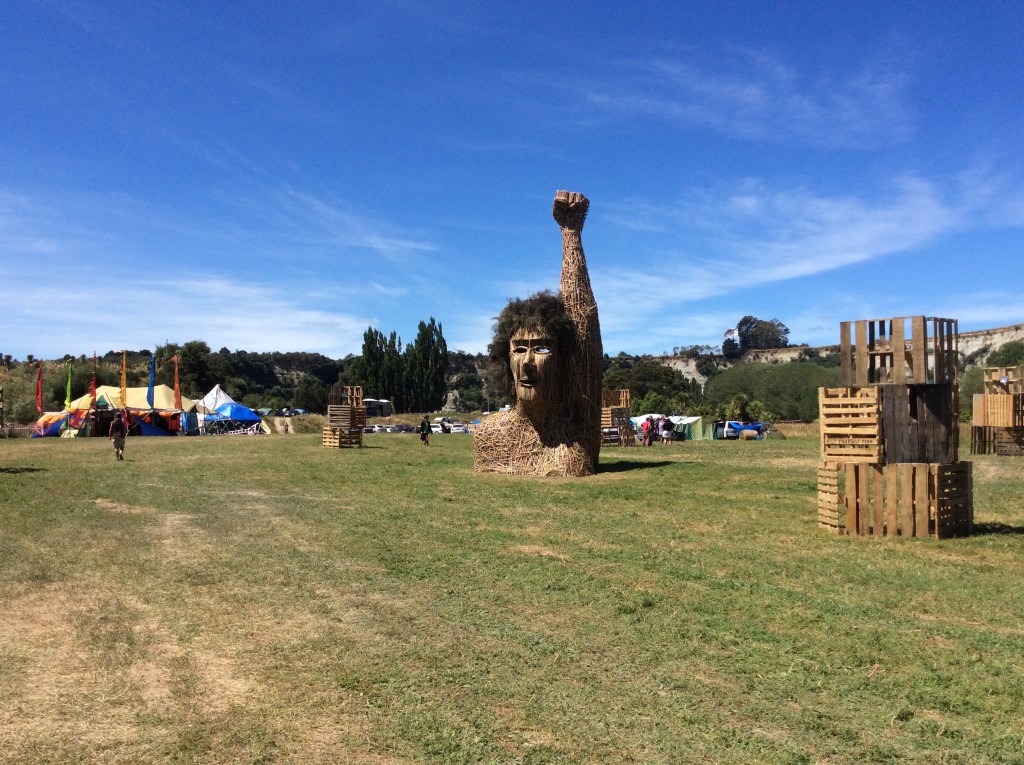Have you ever thought of building the Kiwiburn Effigy? Find out what the experience is like from Nico Skyfister who brought us the 2015 Papatuanuku Woman Effigy.
Planning and building the effigy was one of the most challenging and exhilarating experiences I have ever undertaken. It is not something that can readily be undertaken on your own without the support and input of family, friends, and the wider kiwiburn community. So firstly I’d just like to acknowledge all those who played a part, big or small in helping make this project a reality.
I started thinking about my contribution for the 2015 kiwiburn at the previous burn, but was at a loss of what to do as at that stage, I did not think I had the skills to build the man/effigy. But it was after seeing pictures of the africa burn man (half a torso coming out of the ground), that changed the way I thought about what was possible. The idea of a standing effigy was both daunting from an engineering perspective and also uninteresting for me from a creative position. I wanted to push the boundaries of what was possible and really change things up. I also felt confident that with the skills I had, I could construct a figure that was solid at its base, getting lighter the higher it got.
I was also uninterested in building a man. The idea of reinforcing the masculine dominance in our society by building a man, even if it’s supposed to be gender neutral man, did not appeal to me. The feminist in me wanted to try and pay tribute to the important women in our lives through this project by naming it for what it was, a woman. The mothers, sisters, friends, lovers, neighbours and all the other women who help make up our diverse community. This project was for them.
From this starting point and guided by my background in activism, I wanted this project to be powerful both visually as well as metaphorically. Grounded in the idea that humans are slowly destroying the earth, I wanted this to symbolise both the earths resilience as well as acknowledge those fighting for her survival. And so the idea of having a woman bursting out of the ground with her fist raised emerged, the amalgamation of both the earth and humans fighting back.

I discussed this idea with a range of different people and started getting input from various people. As I don’t feel drawing is one of my strong points, I got input and some early sketches from my friend and fellow kiwiburner Christina. She helped conceptualise the idea onto paper and allowed me to apply for the build lead. Unfortunately due to workload commitments she was unable to help provide final drawings so I turned to my father for assistance. By using what I had told him of the design as well as Christina’s drawings, he was able to provide a detailed sketch of the final project. Without them, this project would likely have been a non-starter.

Friends, family and the wider kiwiburn community helped me out in so many ways, from helping ordering the lighting, to collecting 250 pallets, scavenging for demolition timber, tediously cutting down and splitting bamboo, collecting manuka branches, loading and unloading trucks, transport, helping source build participants, transport to and from the site. Without all this support and engagement with the project, it wouldn’t have happened.

A big part of this project for me was to use as little new materials as possible, and that eventuated in only needing to buy four pieces of timber; The four centre beams that the entire structure was built off. I knew I would not be able to find the dimensions I would need and was able to source this timber from the same location as the temple crew. But the rest of the materials were free, apart from the transport involved. This meant that I was able to spend a sizeable portion of my budget on providing swag for my hardworking crew. Some of my crew I lined up fairly early, others came in quite late in the piece. Each played a role on getting the project off the ground and finished. I had a lot of people ask to be included in the build team, but requests came mainly from men, and it was important to me that the composition of the team was equal males and females. And in the end, what a team I had. They each brought unique qualities and skills that made the build go so smoothly.
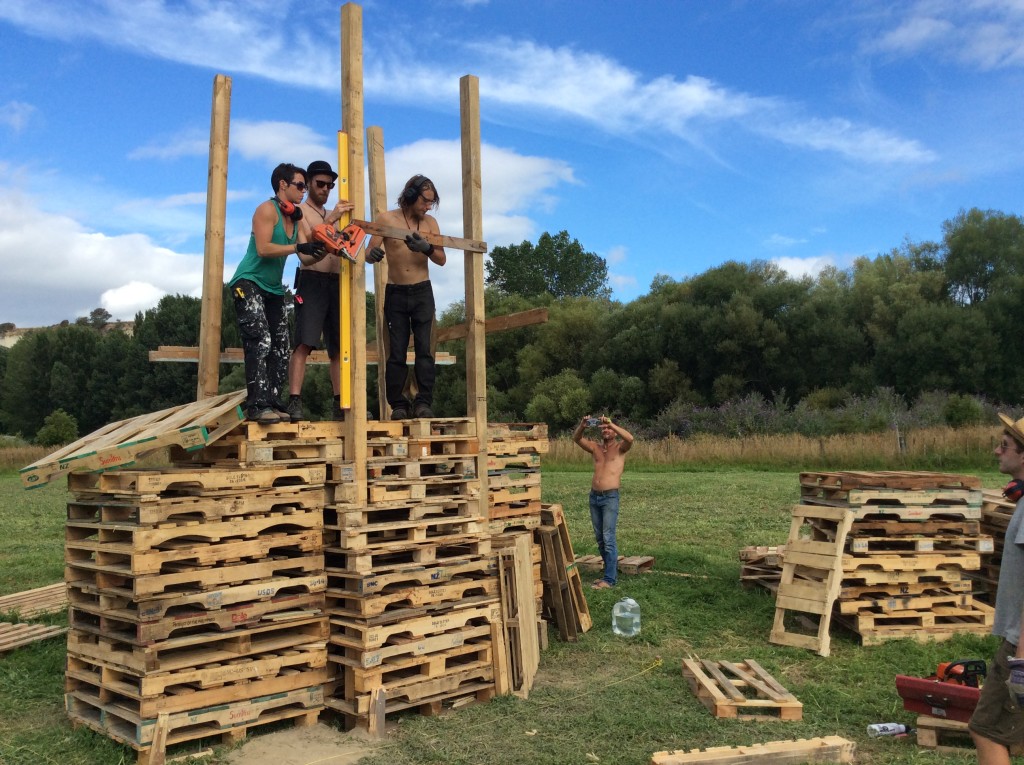
The process of actually building the structure was fairly simple. With the four centre beams dug into the ground, we could then start layering pallets horizontally around the beams. The beauty of using pallets is that they are modular and stackable. The structure also strengthened as we added more materials to it. Bracing timber was added as we increased the height. We were fortunate to have been able to purchase scaffolding that meant that we had platforms for safely working at height, which is now available for future build crews.
The raised arm was made by triangulating long bamboo poles, ensuring that the structure was light, all the lashing was made with bamboo pins and natural fibre rope. We then attached bamboo cross pieces, which the split bamboo cladding was attached to, creating the form of the arm. The arm was then lifted and fixed in place with the use of a hiab crane. I had initially been going to clad the structure in woven flax, but after many discussions about practicality, protocol, and suitability, I was unable to get enough of a unified response about it, that I decided to use another material. Nick, who was the lead build of the effigy in 2014, suggested the use of split bamboo as the cladding, and kindly provided us with two bamboo splitters. The splitting of the bamboo proved to be the most tedious and time consuming process of the whole build, and just want to acknowledge everyone who spent many hours and days splitting bamboo.
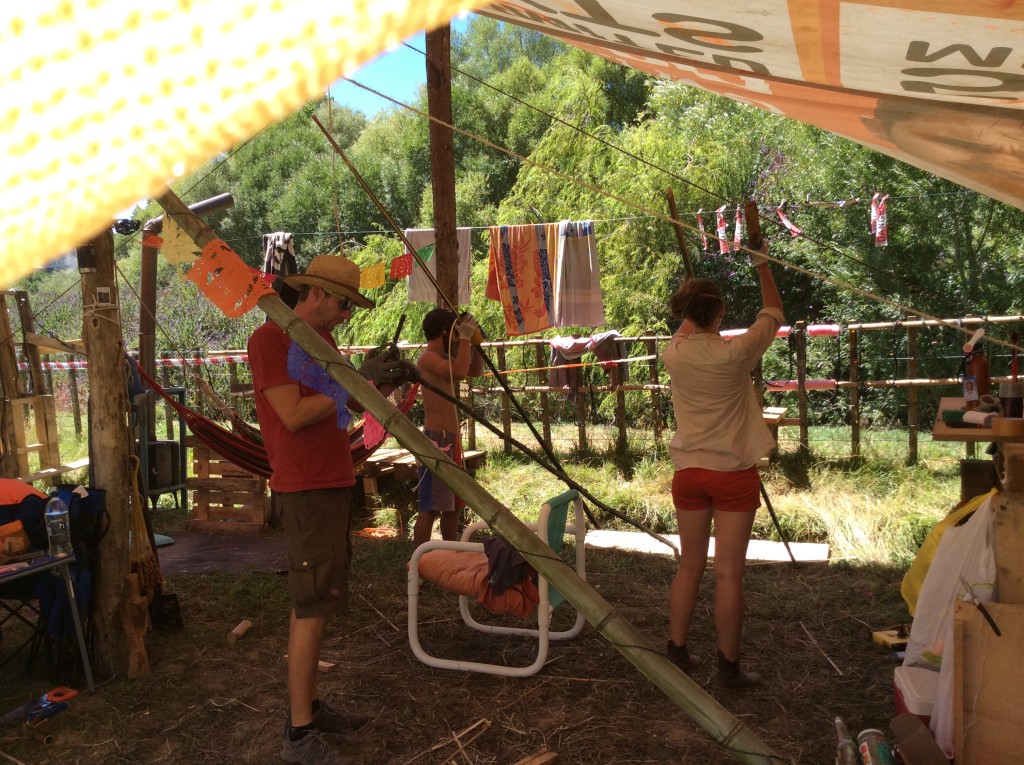
I had originally intended the cladding to be fixed the same way as the face, with pieces cut to measure, but that would have been extremely labour intensive and we would likely not have finished in time. It would also not have been as strong. The method we used, by weaving the split bamboo over the structure, came about by one of my crew members ; Jo, experimenting with the material. This method allowed for fairly rapid cladding and meant everyone could be involved and was less time consuming than measuring and cutting each piece individually. It also created an exoskeleton around the structure, adding extra strength as more cladding was added. The end result was a spectacular blend of woven and cut to measure skin that gave her realistic curves and textures.
We added hair this year to give her that extra differentiation. Her hair was made up of a mixture of manuka and totora branches from around Auckland, the site, and also neighbouring forests. These prickly branches helped prevent people from climbing up into the upper platform and from putting too much pressure on the cladding. I had fears of people leaning on the cladding from the inside and falling through, so made sure it was as unwelcoming as possible to lean on the weak points. The internal cavity of the head was designed to give people the opportunity to fully interact with the structure. A chance to get inside the mind of the woman, to see what she sees, to be her voice, and really feel part of the structure. It was really exciting and humbling to see the way people interacted with her, to see kids climbing and laughing all over her, people sleeping inside, having parties, quiet conversations, all the things.
And then she burned. And wow did she burn. We were so fortunate that it was such a still and quiet night, the embers rose up and then fell directly back down on the fire. We had prepared some extra pyro elements that unfortunately didn’t go according to plan, but looking back it didn’t matter. We decided not to light from the outside (bamboo is fire retardant), and also we thought that the effect of having the fire start from the inside would be more dramatic. Like her heart bursting into flames to consume the structure. I am still amazed at how long the face remained intact, and think that has to do with the amount of wood we placed inside her head pre burn. It didn’t allow any oxygen to get to that part and so remained until very late in the burn. I couldn’t have hoped for it to go any better than it did.
A small crew of people stayed back afterwards and helped to leave the burnsite clear of any moop and pack down our theme camp. This was helped immensely by the group of people who on Sunday cleaned and raked up the burn scar, for which we were incredibly grateful for. I was super stoked to be given the opportunity to build this structure, and work with an amazing crew. I guess the last thing I really want to highlight is that we managed to do this without any professional builders. And what I mean by that is, if you have an idea, and you can assemble a solid crew around you, then not having the exact qualifications shouldn’t stop you from submitting that idea. Embrace your strengths, acknowledge your weaknesses, and work with others to make your dream a reality. See you at the next kiwiburn!
